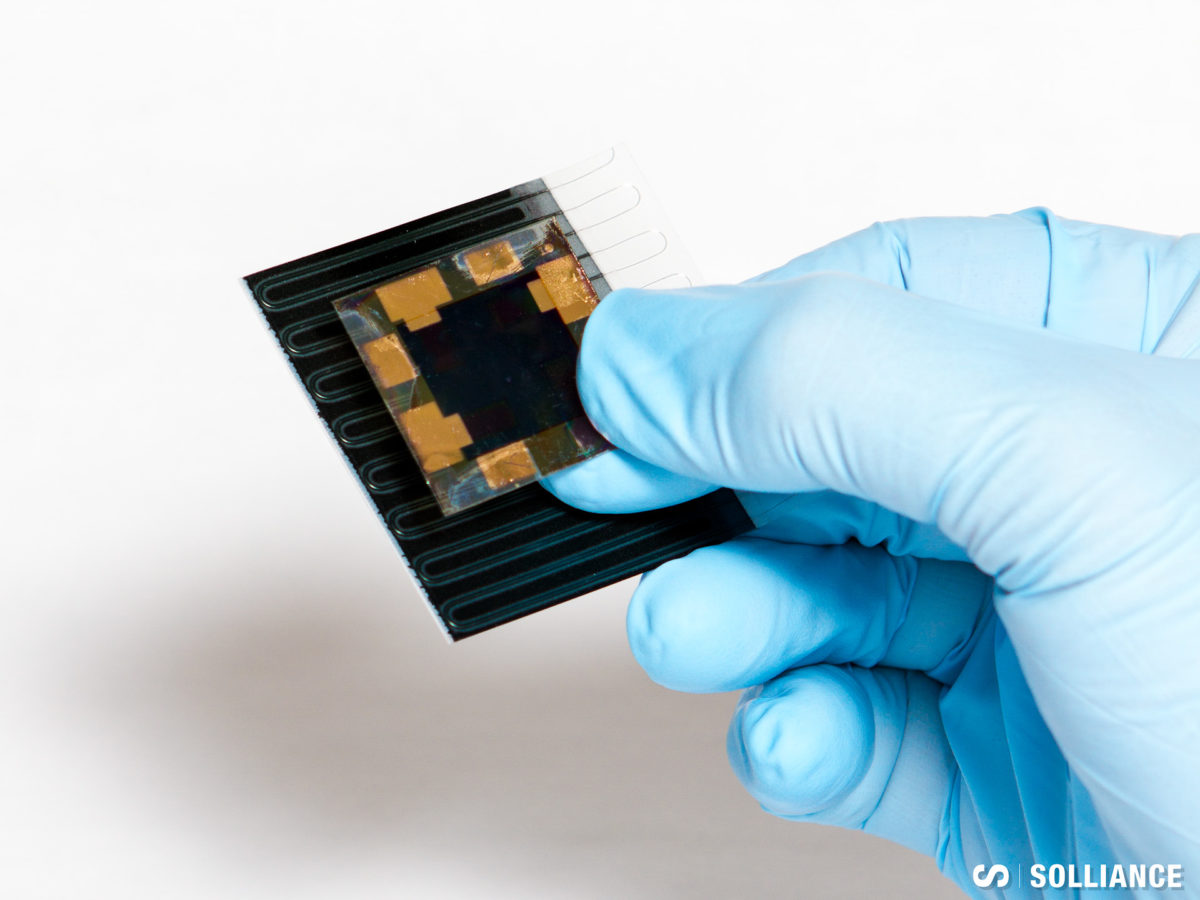The cell, developed in partnership with U.S.-based Hanergy's unit MiaSolé Hi-Tech Corp., relies on two thin film PV technologies combined into a single four terminal tandem solar cell stack.
Solliance says the cell technology is the result of a combination of a perovskite cell and a Cu(In,Ga)Se2 CIGS cell. It adds that thanks to their respective tunable and complementary bandgaps, the cell may have a better performance than that of single junction solar cells.
In order to reach this higher performance, explain the scientists, absorption properties of both cells should be tuned to complement each other.
“Optimizing the bandgap of both cells was an important step in achieving this result,” says Mehrdad Najafi, researcher at Solliance Solar Research. “As single junction efficiencies get closer to the theoretical limits, improving module performance while continuously reducing $/W costs becomes more difficult,” adds MiaSolé director of technology, Dmitry Poplavskyy.
Solliance further explained that the perovskite cell was applied to a transparent and flexible substrate by using transparent conductive electrodes, in order to allow the majority of infrared light to reach the bottom CIGS cell.
The CIGS cell, based on lightweight stainless-steel foil using a high throughput roll-to-cell sputtering process, was developed by U.S.-based PV thin film specialist MiaSolé Hi-Tech, a unit of the Hanergy Group, which earlier today announced an efficiency record of 24.3% for a HJT cell.
Solliance and the Energy Research Center of the Netherlands (ECN) announced in March a 26.3% efficiency on a transparent perovskite solar cell combined with a crystalline silicon solar cell. Later in April, Solliance also announced a new record performance for its large area perovskite modules, which reached a 14.5% conversion efficiency.
Hanergy and Solliance first teamed up in April 2017, when they signed a memorandum of understanding highlighting their intention to develop a strategic collaboration in the area of integrated solar solutions for buildings and infrastructure.
This content is protected by copyright and may not be reused. If you want to cooperate with us and would like to reuse some of our content, please contact: editors@pv-magazine.com.




2 comments
By submitting this form you agree to pv magazine using your data for the purposes of publishing your comment.
Your personal data will only be disclosed or otherwise transmitted to third parties for the purposes of spam filtering or if this is necessary for technical maintenance of the website. Any other transfer to third parties will not take place unless this is justified on the basis of applicable data protection regulations or if pv magazine is legally obliged to do so.
You may revoke this consent at any time with effect for the future, in which case your personal data will be deleted immediately. Otherwise, your data will be deleted if pv magazine has processed your request or the purpose of data storage is fulfilled.
Further information on data privacy can be found in our Data Protection Policy.